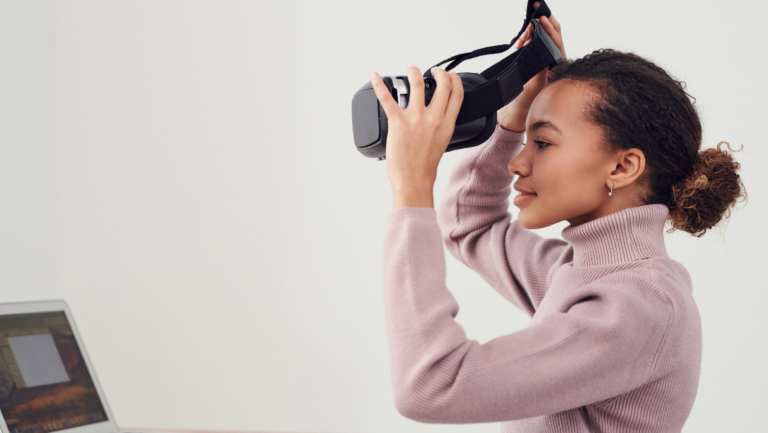Museums have always been places of discovery, where history, science, and art come to life. However, as visitor expectations evolve, traditional static exhibits are no longer enough. Virtual reality (VR) technology is revolutionizing museum experiences, making exhibitions more immersive, interactive, and accessible than ever before. By integrating VR, museums can transport visitors to different times and places, allowing them to engage with history and culture in ways that were once impossible.
Voxelrama specializes in creating interactive, 3D virtual spaces that enhance museum storytelling. From historical reconstructions to digitally preserved artifacts, VR-powered exhibitions bring the past to life while ensuring that museums stay relevant in an increasingly digital world.
Bringing History to Life with Virtual Reality
One of the most powerful applications of VR in museums is the ability to recreate historical moments with stunning accuracy. Visitors can step inside ancient cities, witness historical events, or explore environments that no longer exist. Instead of simply looking at artifacts behind glass, they can experience history as if they were there.
For example, a VR-powered exhibit about ancient Egypt could allow visitors to walk through the pyramids as they were thousands of years ago. They could see hieroglyphs in their original colors, witness how temples were built, or even interact with digital reconstructions of historical figures. This level of immersion makes history more engaging, memorable, and educational.
Voxelrama has worked with cultural institutions to develop highly detailed, interactive VR spaces that provide visitors with an unparalleled experience. By using 3D modeling, photorealistic rendering, and historical research, our team ensures that every virtual environment is both visually stunning and historically accurate.
Making Art and Science More Interactive
VR isn’t just for history—it’s also transforming how art and science are presented. Interactive virtual galleries allow visitors to view high-resolution 3D scans of paintings and sculptures, zoom in on fine details, and even manipulate lighting to see how artworks change under different conditions.
Science museums are also using VR to create immersive learning environments. Visitors can travel inside the human body, explore the depths of the ocean, or journey into space—all without leaving the exhibition hall. These experiences make complex scientific concepts easier to understand and far more engaging.
For institutions with rare or fragile artifacts, VR also provides a way to digitally preserve and display objects that might otherwise be too delicate for public viewing. A museum that owns an ancient manuscript, for example, can allow visitors to flip through its pages virtually, preventing wear and tear while still offering full access to its contents.
Expanding Accessibility with Virtual Museum Tours
One of the biggest advantages of VR technology is its ability to make museums accessible to a global audience. Not everyone can travel to major cultural institutions, but with VR, anyone can explore exhibitions from the comfort of their own home.
Virtual museum tours allow users to navigate through fully digitized exhibits, interact with 3D artifacts, and access educational content as if they were physically present. These experiences are especially beneficial for schools, researchers, and people with disabilities who may have difficulty visiting museums in person.
Voxelrama works with museums to develop virtual tours that retain the essence of the physical experience, ensuring that even remote visitors feel immersed in the exhibition. By incorporating audio guides, interactive hotspots, and AI-driven storytelling, we create engaging digital spaces that can be accessed anytime, anywhere.
The Future of Museums in a Digital World
As technology advances, museums must adapt to stay relevant. VR and other digital tools will play a crucial role in the future of museum exhibitions, offering new ways for audiences to engage with history, art, and science. The possibilities are endless—from AI-powered curators that personalize tours based on visitor preferences to multiplayer virtual experiences that allow groups to explore exhibits together in real-time.
Voxelrama is at the forefront of this transformation, helping museums create immersive digital environments that enhance learning, accessibility, and engagement. Whether it’s recreating lost historical sites, building interactive art galleries, or designing educational VR experiences, our expertise in 3D visualization ensures that every exhibition is both visually compelling and technologically advanced.
Would you explore a museum exhibit in virtual reality? How do you think technology can make cultural spaces more engaging for future generations?
Read answers to our Frequently Asked Questions (FAQ).




